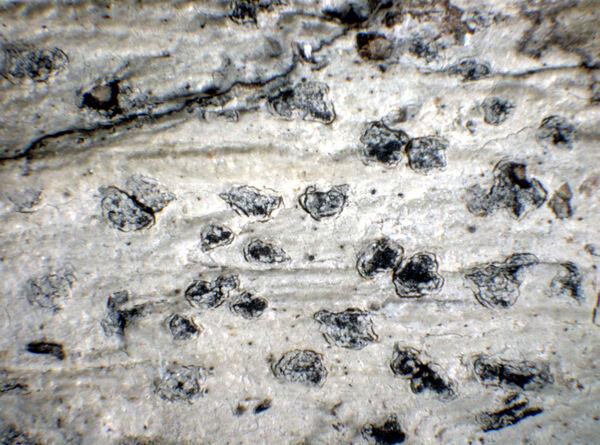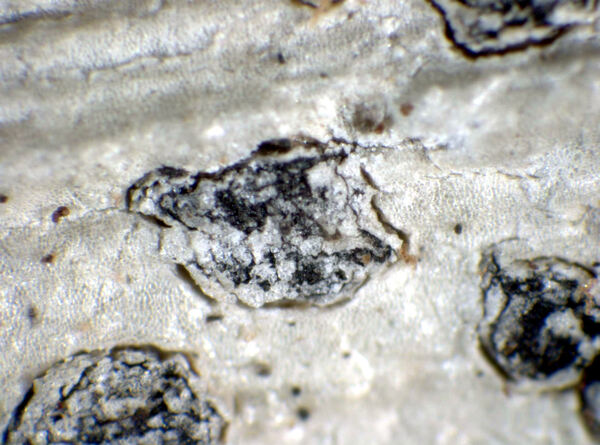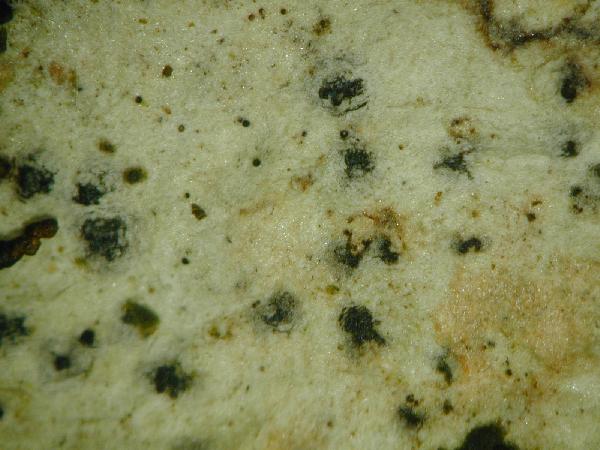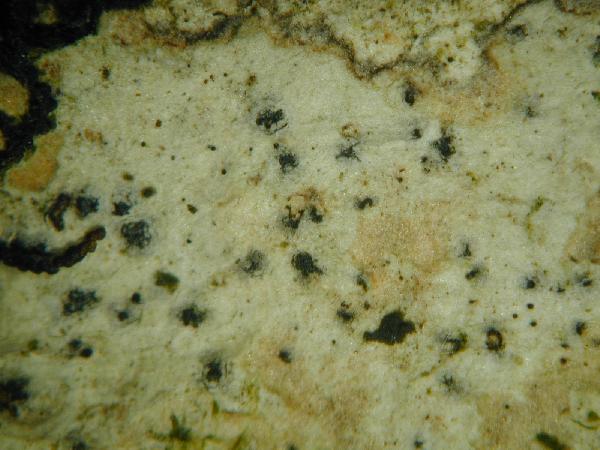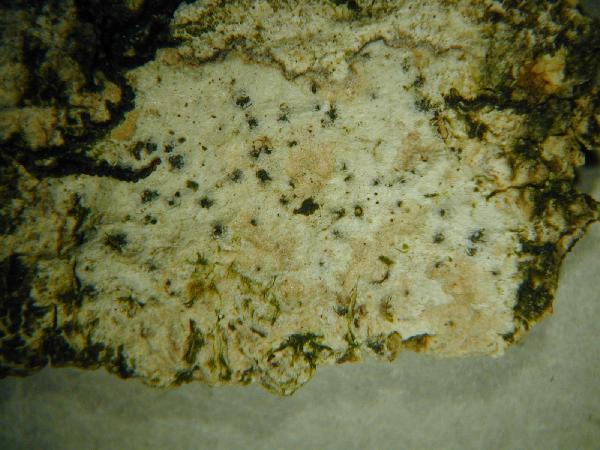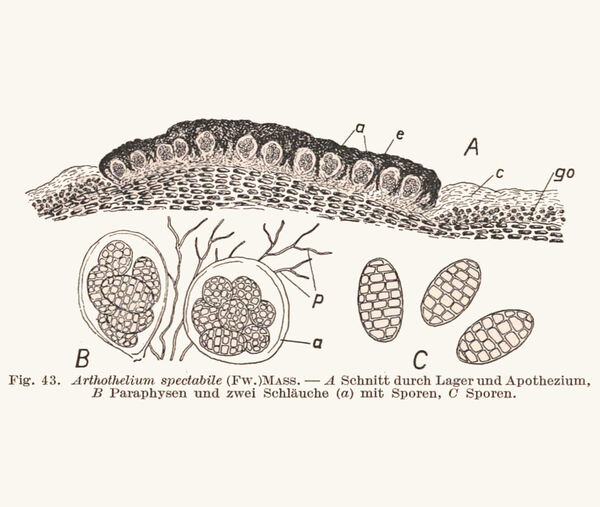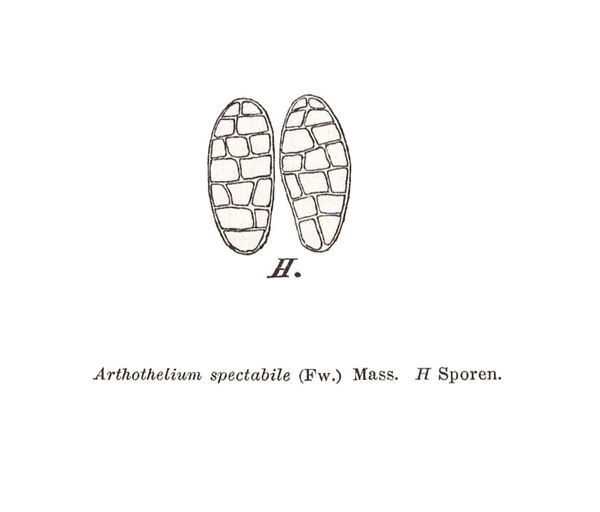Arthothelium spectabile A. Massal.
Flot. ex A. Massal., Ric. Auton. Lich. Crost.: 54, 1852.
Synonyms:
Description: Thallus crustose, mostly endosubstratic, effuse, greyish white to greenish grey, with or without a dark prothallus, the thalline hyphae I+ blue. Apothecia arthonioid, rounded to angular, up to 2 mm across, level with thallus, with a flat to slightly convex, black, epruinose, rough disc, without a distinct proper margin. Epithecium pale to dark reddish brown, often with bark fragments, K+ reddish; hymenium patchily brownish, up to 150 µm high, I+ red, K/I+ blue, K+ faintly green; paraphysoids branched and anastomosing, sinuous, c. 0.5-1.5 µm thick, the apices without a brown cap; hypothecium brownish, c. 50 µm high, with bark fragments, K+ faintly green. Asci 8-spored, subglobose, semi-fissitunicate, with a large apical dome and a distinct ocular chamber, lacking K/I+ blue structures. Ascospores muriform, with 5-7 transverse septa and 1-3 longitudinal septa in each transverse segment, hyaline, ellipsoid, 26-37 x 12-15 µm. Photobiont trentepohlioid. Spot tests: thallus K-, C-, KC-, P-. Chemistry: without lichen substances.
Growth form: Crustose
Substrata: bark
Photobiont: Trentepohlia
Reproductive strategy: mainly sexual
Most common in areas with a humid-warm climate (e.g. most of Tyrrenian Italy)
Commonnes-rarity: (info)
Alpine belt: absent
Subalpine belt: absent
Montane belt: very rare
Dry submediterranean belt: extremely rare
Humid submediterranean belt: extremely rare
Padanian area: absent
pH of the substrata:
1 2 3 4 5
Solar irradiation:
1 2 3 4 5
Aridity:
1 2 3 4 5
Eutrophication:
1 2 3 4 5
Poleotolerance:
0 1 2 3
Altitudinal distribution:
1 2 3 4 5 6
Rarity
absent
extremely rare
very rare
rare
rather rare
rather common
common
very common
extremely common
Loading data...
Occurrence data
Predictive map
Growth form: Crustose
Substrata: bark
Photobiont: Trentepohlia
Reproductive strategy: mainly sexual
Most common in areas with a humid-warm climate (e.g. most of Tyrrenian Italy)
Commonnes-rarity: (info)
Alpine belt: absent
Subalpine belt: absent
Montane belt: very rare
Dry submediterranean belt: extremely rare
Humid submediterranean belt: extremely rare
Padanian area: absent
pH of the substrata:
| 1 | 2 | 3 | 4 | 5 |
Solar irradiation:
| 1 | 2 | 3 | 4 | 5 |
Aridity:
| 1 | 2 | 3 | 4 | 5 |
Eutrophication:
| 1 | 2 | 3 | 4 | 5 |
Poleotolerance:
| 0 | 1 | 2 | 3 |
Altitudinal distribution:
| 1 | 2 | 3 | 4 | 5 | 6 |
Rarity
absent
extremely rare
very rare
rare
rather rare
rather common
common
very common
extremely common
Loading data...
Occurrence data
Predictive map


